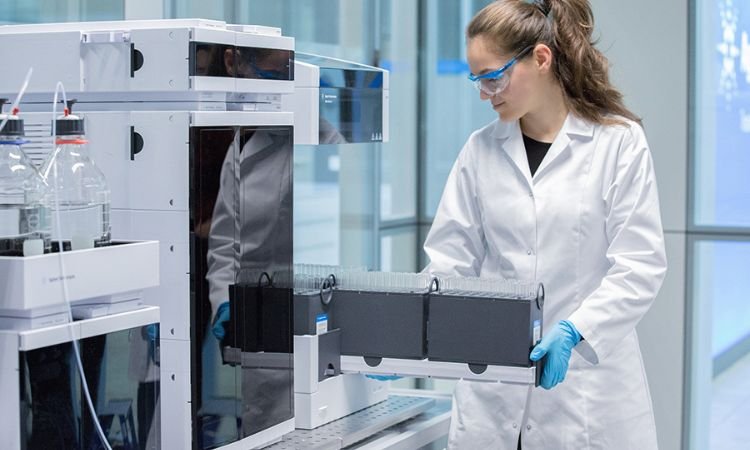In the rapidly evolving world of science and technology, analytical instrumentation plays a crucial role in ensuring precision, accuracy, and reliability across various industries. The global analytical instrumentation market size attained a value of about USD 50.93 billion in 2023. The market is further expected to grow in the forecast period of 2024-2032 at a CAGR of 7.7%, reaching nearly USD 99.03 billion by 2032. This growth reflects the increasing demand for sophisticated analytical tools that enhance research, product development, and quality assurance across diverse sectors.
Market Overview
Analytical instrumentation encompasses a wide range of tools and techniques used to analyze substances, determine their composition, and understand their properties. These instruments are vital in fields such as pharmaceuticals, environmental monitoring, food safety, and petrochemicals. The growing emphasis on quality control, regulatory compliance, and R&D in various industries has driven the need for advanced analytical solutions, contributing to the overall growth of the market.
Market Size and Forecast
As of 2023, the analytical instrumentation market is valued at approximately USD 50.93 billion. This figure represents a substantial increase from previous years, signaling robust demand. Forecasts suggest that the market will continue on an upward trajectory, with a projected compound annual growth rate (CAGR) of 7.7% from 2024 to 2032. By the end of this forecast period, the market is expected to reach nearly USD 99.03 billion. Factors such as technological advancements, increasing investments in R&D, and the rising prevalence of stringent regulations in industries are expected to drive this growth.
Product Type Analysis
The analytical instrumentation market can be segmented by product type, each offering unique functionalities and applications:
Chromatography
Chromatography is one of the most widely used analytical techniques, especially in pharmaceutical and chemical analysis. It separates mixtures into their components, allowing for detailed analysis. Innovations in chromatography, such as ultra-high-performance liquid chromatography (UHPLC), have increased efficiency and resolution, further driving market growth.
Molecular Analysis Spectroscopy
Molecular analysis spectroscopy techniques, including infrared (IR) and nuclear magnetic resonance (NMR) spectroscopy, are essential for identifying chemical structures and interactions. The market for these instruments is expanding as they find applications in life sciences and materials science, aiding in drug development and characterization.
Elemental Analysis Spectroscopy
Elemental analysis spectroscopy, which includes techniques like atomic absorption spectroscopy (AAS) and inductively coupled plasma (ICP) spectroscopy, is critical for detecting and quantifying elements in various samples. The demand for these instruments is increasing due to growing environmental concerns and the need for material characterization.
Mass Spectroscopy
Mass spectroscopy is renowned for its sensitivity and accuracy in identifying molecular masses and structures. It plays a pivotal role in proteomics, metabolomics, and environmental analysis. The increasing adoption of mass spectrometry in clinical laboratories and research institutions is a significant growth driver for this segment.
Analytical Microscopes
Analytical microscopes are indispensable in material science, biology, and nanotechnology. They provide high-resolution imaging and analysis capabilities. The demand for these microscopes is rising, particularly in academia and industry, where detailed analysis at the micro and nano levels is crucial.
Others
Other analytical instruments include titrators, pH meters, and ion chromatography systems. While these may represent smaller segments of the market, their contributions are significant, especially in specialized applications.
End-Use Industry Analysis
The analytical instrumentation market is also categorized by end-use industries, reflecting the diverse applications of these technologies:
Life Sciences
The life sciences sector is one of the largest consumers of analytical instruments. The need for precise and reliable analytical data in drug development, clinical testing, and biotechnology drives demand. Regulatory compliance and the growing focus on personalized medicine are further boosting this segment.
Chemical & Petrochemical
In the chemical and petrochemical industries, analytical instrumentation is essential for quality control, process optimization, and compliance with safety standards. The increasing production and refinement of chemicals and fuels necessitate robust analytical capabilities, fueling market growth.
Others
Other industries utilizing analytical instruments include food and beverage, environmental monitoring, and materials science. Each of these sectors has unique requirements, contributing to the overall diversity and expansion of the market.
Regional Analysis
The global analytical instrumentation market exhibits varied growth patterns across different regions:
North America
North America holds a significant share of the analytical instrumentation market, driven by advancements in technology and strong investment in R&D. The presence of major manufacturers and research institutions in the region further enhances its market position.
Europe
Europe is witnessing steady growth in the analytical instrumentation market, supported by stringent regulatory frameworks in sectors such as pharmaceuticals and environmental sciences. The emphasis on quality and safety continues to propel market demand.
Asia-Pacific
The Asia-Pacific region is expected to experience the fastest growth, driven by increasing industrialization, rising R&D investments, and the growing pharmaceutical sector. Countries like China and India are emerging as key markets, contributing to the overall expansion.
Latin America & Middle East & Africa
These regions are experiencing gradual growth in the analytical instrumentation market, primarily due to the increasing focus on environmental monitoring and regulatory compliance in industries such as oil and gas, pharmaceuticals, and food safety.
Competitive Landscape
The analytical instrumentation market is highly competitive, with several key players dominating the landscape. Major companies include Thermo Fisher Scientific, Agilent Technologies, Waters Corporation, and PerkinElmer. These companies are engaged in continuous innovation, mergers and acquisitions, and strategic partnerships to enhance their market presence. Recent developments in automation and digitalization are also reshaping the competitive dynamics of the market.
Challenges and Opportunities
While the analytical instrumentation market presents significant growth opportunities, it also faces challenges. Regulatory hurdles, high initial costs of advanced instruments, and the need for skilled professionals are notable obstacles. However, the increasing integration of AI and machine learning into analytical processes presents a promising avenue for innovation, potentially improving efficiency and accuracy.










Leave a Reply